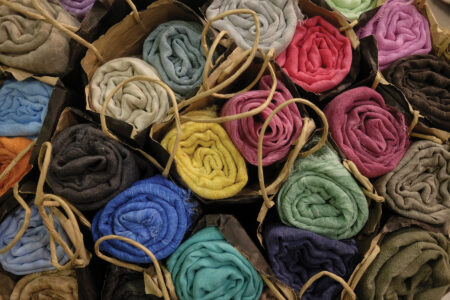Encourage a more sustainable textile market by choosing natural fibers that protect the environment, honor producer health, and support your needs.
Which kind of fabric is best for the planet? Unfortunately, trying to choose might leave you with decision paralysis. While it’s well-advised to avoid the petroleum-based synthetic fibers such as polyester (which can burn through millions of barrels of oil), knowing what kinds of fabric to buy instead is hardly clear. Are you better off with breathable but resource-hungry cotton, or is fast-growing but heavily processed bamboo a smarter choice for the environment? Let’s look closer at the growing and processing methods of six of today’s most popular natural fibers to find out.
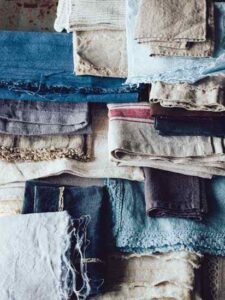
Cotton (Gossypium spp.)
Durable, breathable, and easy to wash, what’s not to like about cotton? For starters, this fluffy fiber is one of the most polluting products on the planet. The plant’s almost insatiable thirst means that it takes just shy of 5,300 gallons of water to produce about 2 pounds of cotton. Furthermore, the production of one cotton T-shirt requires a third of a pound of pesticides, many of which are classified by the Environmental Protection Agency (EPA) as carcinogens.

Is organic cotton an improvement? Not entirely. The product does come from non-genetically modified organisms (non-GMOs), is produced without synthetic fertilizers or pesticides, and isn’t processed with bleaches or artificial colors. Plus, organic cotton is typically grown in ways that replenish soil fertility, foster biological diversity, and prevent chemicals from entering the water system.
However, organic certification standards allow for the use of naturally occurring fertilizers and pesticides, many of which are still toxic to soil organisms and non-target species. Compounding these growing difficulties for organic farmers, cotton plants are notoriously vulnerable to insect damage, much of which is best managed with non-organic pesticides or by growing GMO varieties.
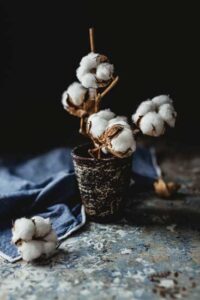
For use in final products, organic cotton tends to be regarded as higher quality than conventional. Several studies have also shown that consumers will choose organic cotton over conventional, especially when they have an understanding of the environmental implications. If you choose to buy cotton, organic still beats conventionally grown, but be aware that there are still drawbacks to the organic ways of processing.
Cotton Care Instructions
Dry cotton at low temperatures to avoid shrinkage, preferably on a clothesline. For the first wash, add 1/4 cup vinegar to the final rinse to set natural dyes and to prevent color from bleeding.
Linen (Linum usitatissimum)
Linen comes from flax (Linum usitatissimum), a fibrous plant famously cultivated by the ancient Egyptians. This time-tested fabric is used for everything from home furnishings to fashionable men’s suits, but is it sustainable?
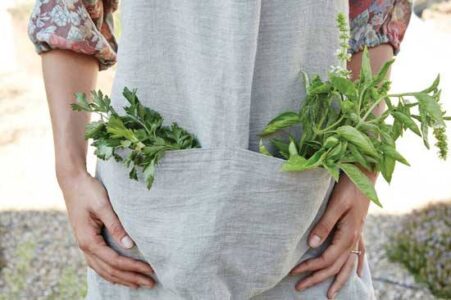
From an environmental perspective, linen makes sense. It requires few inputs, is gentle on farm soil, and can be incorporated into crop rotations. Flax grows quickly, requires less water and pesticides than cotton, and the entire plant can be used for fabric production. Because flax plants can handle cold temperatures, it grows well in climates that are unsuitable for other fiber plants, such as cotton or bamboo. Likewise, flax yarn is strong enough that it doesn’t require chemical starching during the spinning and weaving stages.
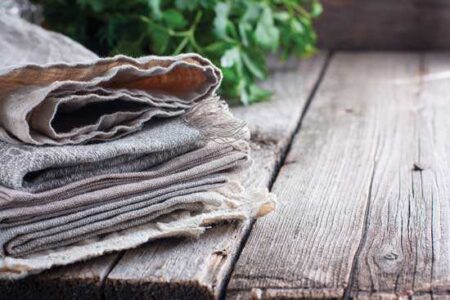
However, linen processing often leads to water pollution, as flax plants are traditionally soaked in large holding ponds to start the decomposition process before the fiber is removed. Some alternative processing methods can reduce this pollution, including allowing plants to decompose directly in fields (field retting), though this could lead to poorer flax quality. In order to avoid potential toxic fertilizers and pesticides involved in linen processing, look for organic suppliers.
Linen Care Instructions
Linen is easy to care for, and consistent washing makes the fabric softer. Make sure you use cold or lukewarm water and a gentle machine cycle with a mild detergent that won’t harm the fibers. Low-temperature tumble drying works well, as does line drying.
Hemp (Cannabis sativa)
Regarded as one of the world’s most durable natural fibers, hemp fabric is lightweight, absorbent, and rivals the strength of cotton. While the material might sound strange today, close to 80 percent of cloth in the United States contained hemp before 1920. America’s first hemp plantings may have been in Jamestown, and the fibrous plant was used for manufacturing everything from work pants to pioneer wagon covers.
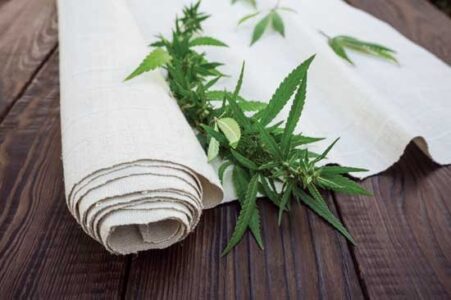
Hemp thrives in a variety of climates and soil types, grows tightly spaced, outcompetes weed species, and requires little water and no pesticides. The plant’s long taproot holds soil in place, pulls nutrients to the surface, and prevents erosion. Hemp fabric is entirely biodegradable, UV- and mold-resistant, and cost-effective to produce.
However, hemp has some drawbacks when it comes to versatility. On its own, the fiber creates a material that lacks the soft and supple texture of cotton, for example, so it’s often blended with other fabrics. Hemp fibers also tend to “bunch up” if not treated with anti-wrinkle agents. This occasionally leads to weak points in the fabric that can create holes. Buying hemp fabric blends that are advertised as
“relaxed fit” will eliminate this problem, though that does raise concerns about introducing harmful chemicals.
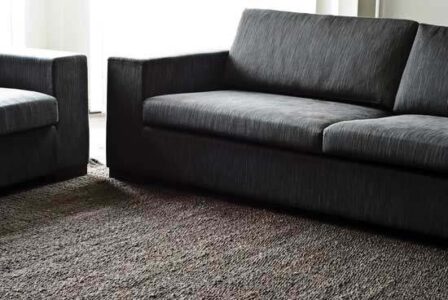
Hemp Care Instructions
Use a gentle wash cycle with a natural detergent, and wash dyed hemp in cold water to prevent colors from fading. Make sure to watch the drying time, as over-drying can lead to broken fibers and a weakened fabric. Likewise, wringing out wet hemp can break the fibers and produce permanent wrinkles in the material.
Bamboo (Phyllostachys edulis)
Considered one of the world’s most renewable materials, bamboo-fiber fabrics have surged in popularity in recent years. Fast-growing, soil-enhancing, and naturally pest-resistant, it takes bamboo plants less than four years to go from seed to full size, and the plant’s dense root network eliminates the need to replant after harvesting.
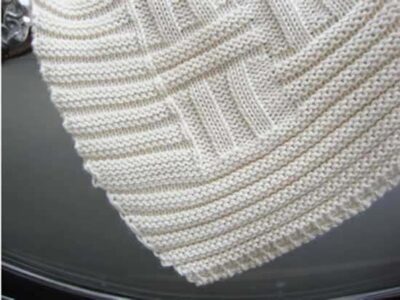
While little bamboo is certified organic, most is grown organically because it needs few inputs. China is the most significant country to cultivate bamboo on a commercial scale, yet there is a struggle to include bamboo in specific and strong environmental standards to help monitor its production. Thus, because of this oversight, farmers can raise it as a monoculture, which can put native forests at risk for clear-cutting to make space for bamboo farms. This also takes up valuable habitat space which otherwise could promote biodiversity.
Turning raw bamboo fibers into a silky-soft fabric requires an intensive chemical process that involves carbon disulfide and sodium hydroxide, more commonly known as lye. The fiber is made by dissolving bamboo’s cellulose material in the chemical solution before “spinning” it through heavy machinery to produce thread. Many of these chemicals can be toxic for humans, and while some bamboo is processed in less chemically intensive ways, the resulting fabric isn’t as soft or versatile.
Bamboo Care Instructions
Bamboo fabrics will retain their shape when washed in cold or lukewarm water with a gentle detergent. A clothes dryer set at a cool temperature is safe, and don’t forget, material that contains vegetable dyes should not be dried in direct sunlight.
Wool
This 10,000-year-old textile remains popular for a reason. Thanks to its complex internal structure, wool is springy yet resilient, providing structure to clothes without compromising their warmth. Not only is wool more absorbent and insulating than cotton, but it tends to last longer and need less washing. Wool can absorb large amounts of water without feeling damp — an advantage to wearing this fabric in the snow — and it’s naturally mold- and mildew-resistant.
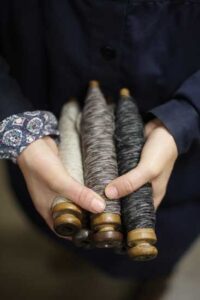
The overall environmental footprint of wool is low. Natural wool is a renewable, biodegradable resource, and well-managed herds of sheep can improve their pasture space and local environment while also providing wool.
However, not all wool is produced sustainably. Many commercial flocks are packed into tight quarters and are applied with pesticides, some of which contain toxic organophosphorus compounds that can harm the human nervous system as well as the reproductive systems of fish and amphibians. Several of these chemicals, including the sheep “dip” that is applied externally on the animals to prevent parasites, often runs off into the water system, damaging water quality and harming aquatic life.

The wool manufacturing process requires bleaches and harsh chemical scouring agents to whiten the wool. Additionally, wool dyes often include toxic heavy metals and even suspected carcinogens. To combat these concerns and promote the care of healthy sheep, buy organic wool whenever possible.
Wool Care Instructions
Handwashing or gentle machine washing is best for wool. Take care not to create too much friction, and get rid of excess water by rolling the garment in a towel before letting it dry flat, preferably in the sun.
Silk
Considered the queen of textiles, silk is prized for its stunning sheen and endless versatility. While silkworms get all the credit for this lustrous fabric, certain species of bees, beetles, mayflies, and silverfish can also produce silk-like fibers.
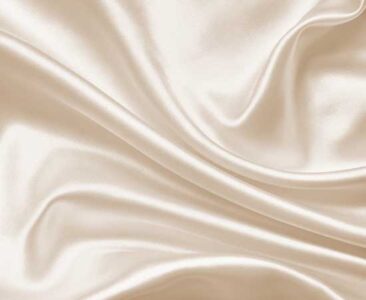
Silk is a naturally hypoallergenic textile that is robust, breathable, and resistant to odor. This insect-made fabric tends to be less environmentally damaging than other fibers, as silkworms feed only on mulberry tree leaves, a fast-growing plant that doesn’t require pesticides or fertilizers to grow. Silk is also considered biodegradable.
Some people consider the silk cultivation process to be gruesome, however. Today’s silkworm moths are so domesticated that they have lost the ability to fly, see, or even survive without direct human intervention. The caterpillars live just five days before creating cocoons out of silk threads and are then boiled alive so that the cocoons remain intact before being processed into silk. Concerns about killing silkworms have increased the popularity of alternative silk production methods that don’t rely on traditional production practices.
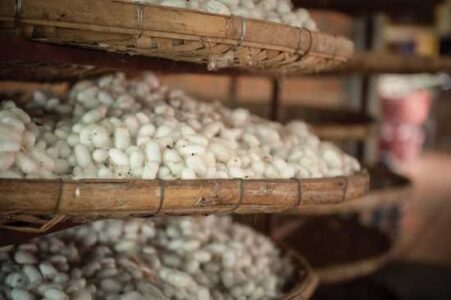
Globally, silk production has environmental repercussions. Cleaning silk requires the use of harsh chemical solvents that pollute groundwater, and with the expectation that the market will grow in the coming years, the increased silk demand may take a larger toll on resources and the environment. Though it may be revered within the textile consumer industry, silk’s environmental impact during processing reveals how even a versatile and biodegradable fabric can still do harm.
Silk Care Instructions
Silk is notoriously difficult to care for. Dry cleaning is best, but you can hand wash your garments with a silk-specific detergent or mild soap. Never bleach or excessively soak the fabric, and all silk should be air-dried flat.
From a social and environmental perspective, there is no perfect natural fiber. Even seemingly sustainable fabrics have drawbacks when they are produced on a global scale. However, the more locally a product is sourced, the better the chances are that production methods are safer and the environment is healthier. Companies and groups of people are stepping up to lead the way in this locally sourced venture. Fibershed, an organization founded in 2010, is one such example, where the vision is to create regional fiber production systems across the world that will decrease global pollution.
To make the best decision for your health and the planet when purchasing natural fibers, you need to be a conscientious consumer. It’s important to carefully evaluate the life cycle, manufacturing process, and overall environmental impact of a fabric before you buy it so that you can make the right choice for your situation.
What’s the Deal with Tencel®?
A new eco-friendly fiber recently hit the market, and it promises to offer a sustainable fabric solution for the planet. Tencel, the brand name for Lenzing AG’s lyocell fiber, is a form of rayon cloth made from regenerated cellulose fiber in a nontoxic, nonpolluting manufacturing process.
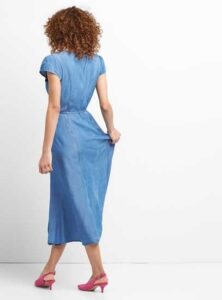
Tencel fibers come from sustainably harvested eucalyptus trees that are processed into a durable rayon fabric. The material is made in a closed-loop process that recycles almost 100 percent of its inputs and decomposes the rest in environmentally beneficial ways. Tencel earned the European Award for the Environment from the European Union for its manufacturing process, and the Forest Stewardship Council (FSC) Certification for its forest management system.
Bright colors might be a cause for concern, as Tencel’s surface is too slippery for natural dyes; chemical solutions, enzyme baths, and dye treatments are used to make them adhere. To try this fabric, seek out brands manufactured in Europe or the United States to ensure the smallest ecological footprint.
Eco-Friendly Apparel Companies
- Alternative Apparel
- Earth Creations
- EcoVibe Apparel
- Encircled
- Groceries Apparel
- HOPE Made in the world
- Indigenous
- People Tree
- SiiZU
- Thought
- Wallis Evera
Eco-Friendly Textile Companies
- Aurora Silk
- Birch Organic Fabrics
- Earth Protex
- EnviroTextiles LLC
- Hemp Traders

